1. Bestandteile des Reagenzienkits
| Spezifikationen | 50T | 100T |
| Katze. NEIN. | SN0221 | SN0222 |
| DNA-Extraktionssäulen (Satz) | 50 (Satz) | 100 (Satz) |
| Reagent Buffer IV | 20 ml | 2×20 ml |
| Reagent Buffer Cplus | 30 ml | 30 ml |
| Waschpuffer 1 | 15 ml | 2 × 15 ml |
| Elutionspuffer | 20 ml | 20 ml |
| Proteinase K | 1ml | 2x1ml |
| RNaseA | 1ml | 1ml |
| Bedienungsanleitung | 1 | 1 |
2. Lagerung
Dieses Reagenzienkit sollte bei Raumtemperatur gelagert werden (15-25℃) und bei trockenen Bedingungen, mit einer Haltbarkeit von 12 Monate. Die DNA-Extraktions-Reinigungssäulen können aufbewahrt werden 1 Jahr in einer kühlen und trockenen Umgebung. Proteinase K und RNase A enthalten Konservierungsstoffe, ermöglicht den Transport bei Raumtemperatur, aber zur Langzeitlagerung, Sie sollten bei -20℃ aufbewahrt werden.
3. Anweisungen zur Verwendung des Reagenzienkits
3.1 Dieses Reagenzienkit ist für die molekularbiologische Forschung bestimmt und sollte nicht zur Diagnose oder Behandlung von Krankheiten verwendet werden.
3.2 Einige Komponenten im Reagenzienkit enthalten Reizstoffe. Schutzmaßnahmen wie das Tragen von Schutzkleidung und Schutzbrille werden empfohlen.
3.3 Während der Verwendung dieses Reagenzienkits, eine Hochgeschwindigkeitszentrifuge, Wasserbad (Metallbad), Vortexmixer, Wasserfreies Ethanol, steriles entionisiertes Wasser, und EP-Röhren müssen vom Benutzer vorbereitet werden.
4. Einführung in das Reagenzienkit
The Animal/Tissue DNA-Reinigung Kit offers a rapid and effective solution for animal tissue and cell culture DNA purification, widely applicable across animal tissues and cell cultures.
This DNA rapid purification kit swiftly extracts total DNA from animals and cells, yielding DNA directly usable for PCR, Southern Blot, and similar applications. The purification process does not require toxic agents like phenol-chloroform, making this DNA purification kit highly suitable for various other samples.
5. Experimentelle Prinzipien und Verfahren
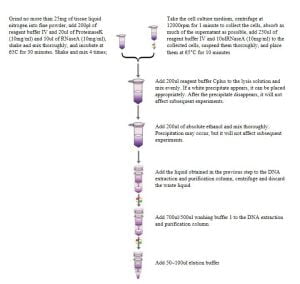
6. Extraktionsprozess
Vor Beginn des Experiments:
A. Reagent Buffer IV tends to precipitate under low-temperature conditions. Es wird empfohlen, es auf 65℃ zu erhitzen 5 Protokoll. After the precipitation dissolves, es kann normal verwendet werden.
B. Prior to use, Fügen Sie die angegebene Menge an wasserfreiem Ethanol hinzu WaschenPuffer 1 wie auf dem Etikett der Reagenzflasche angegeben, and mark a check on the label to indicate the addition of anhydrous ethanol.
C. Elutionspuffer ist ein 0.1x TE-Lösung mit minimalem EDTA -Inhalt. Wenn EDTA nachfolgende Experimente beeinflussen könnte, Es wird empfohlen, den Elutionspuffer durch steriles entionisiertes Wasser zu ersetzen.
- Probenhandhabung:
A. Take cell culture, Zentrifuge bei 12,000 U/min für 1 Minute, um Zellen zu sammeln, and aspirate the supernatant as much as possible. Add 250μl of Reagent Buffer IV and 10μl of RNaseA (10 mg/ml) to the collected cells, thoroughly suspend, and incubate at 65°C for 10 Protokoll.
B. Grind tissue not exceeding 25 mg into a fine powder using liquid nitrogen. Add 200μl of Reagent Buffer IV, 20μl of Proteinase K (10 mg/ml), and 10μl of RNaseA (10 mg/ml) to the powder, shake well, and incubate at 65°C for 30 Protokoll, shaking the mixture four times during this period.
2. Hinzufügen 200μl of Reagent Buffer Cplus zum Lysat und gut mischen. Wenn ein weißer Niederschlag erscheint, Es kann ungestört bleiben; it won’t affect subsequent experiments once the precipitate disappears.
3. Hinzufügen 200μl wasserfreies Ethanol und gründlich mischen. Some precipitation might occur, Es wird sich jedoch nicht auf die nachfolgenden Experimente auswirken.
4. Tragen Sie die erhaltene Flüssigkeit auf die DNA -Extraktionsreinigungssäule auf (Ärmel) (jedes Mal ungefähr 650 ~ 700 μl), let it sit at room temperature for 2 Protokoll, Zentrifuge bei 12,000 U/min für 30 Sekunden, Entsorgen Sie den gesammelten Abfall, und setzen Sie das Sammelröhrchen für den nächsten Schritt wieder in die Reinigungssäule ein.
5. Platzieren Sie die DNA-Extraktions-Reinigungssäule (Ärmel) into a new collection sleeve, hinzufügen 700μl von WaschenPuffer 1, Zentrifuge bei 12,000 U/min für 30 Sekunden, Entsorgen Sie den Abfall, und platzieren Sie die DNA-Extraktions-Reinigungssäule (Ärmel) back into the sleeve for the next step.
(Notiz: Confirm the addition of anhydrous ethanol to Rinse Buffer 1.)
6. Hinzufügen 500μl von WaschenPuffer 1 zur DNA-Extraktions-Reinigungssäule (Ärmel), Zentrifuge bei 12,000 U/min für 30 Sekunden, extend centrifugation time appropriately to ensure the membrane is drier.
(Notiz: Ethanol has a significant impact on subsequent experiments; therefore, membrane dryness is crucial. Nach Zentrifugation, ensure no ethanol remains before elution. Discard the waste and collection tubes afterward. After rinsing with Wash Buffer 1, the membrane on the DNA purification column should have a faint color. Carefully remove the DNA purification column after centrifugation, ensuring it doesn’t touch the collection tube to prevent ethanol contamination.)
7. Place the DNA purification column in a new centrifuge tube, add 100μl of Elution Buffer directly onto the membrane, Zentrifuge bei 12,000 U/min für 1 Minute, und sammeln Sie die DNA.
(Notiz: Eluting DNA with 50μl of Elution Buffer can increase DNA concentration but decreases total DNA yield.)

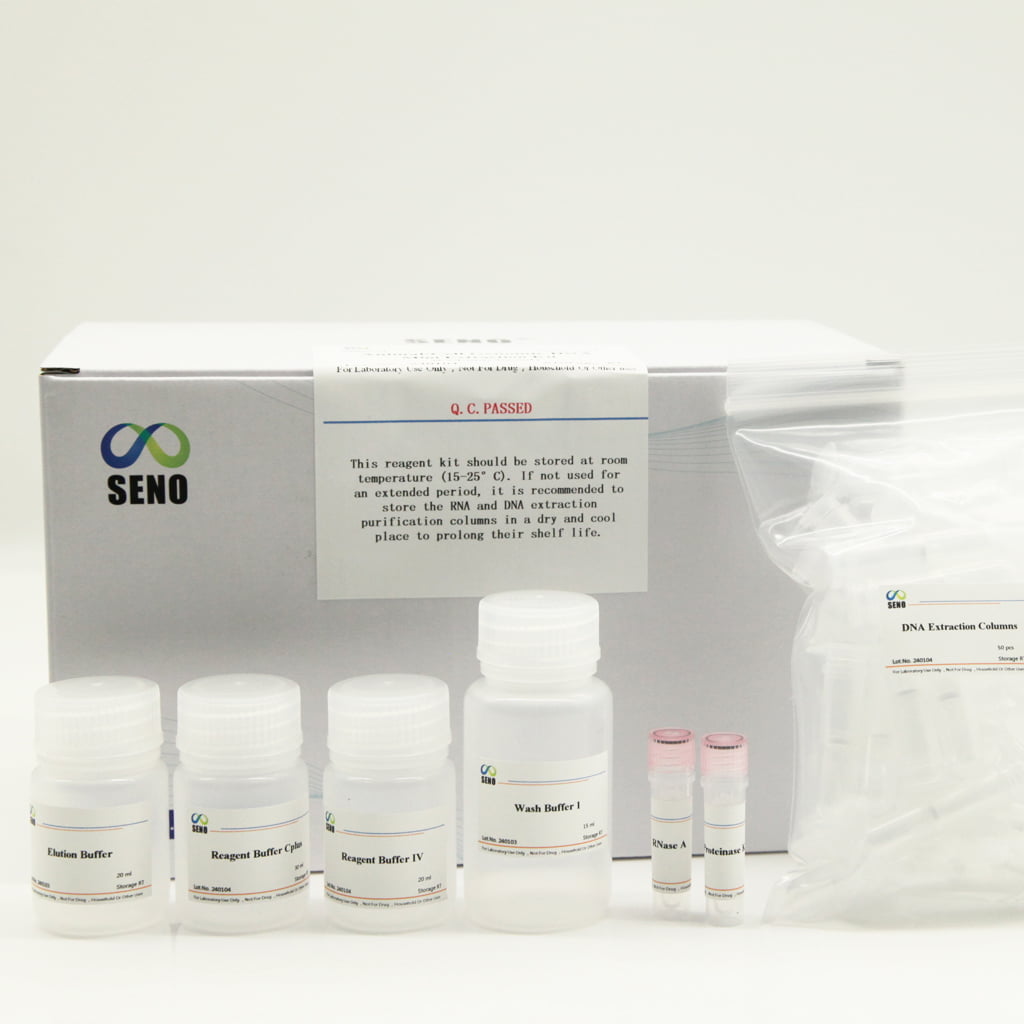
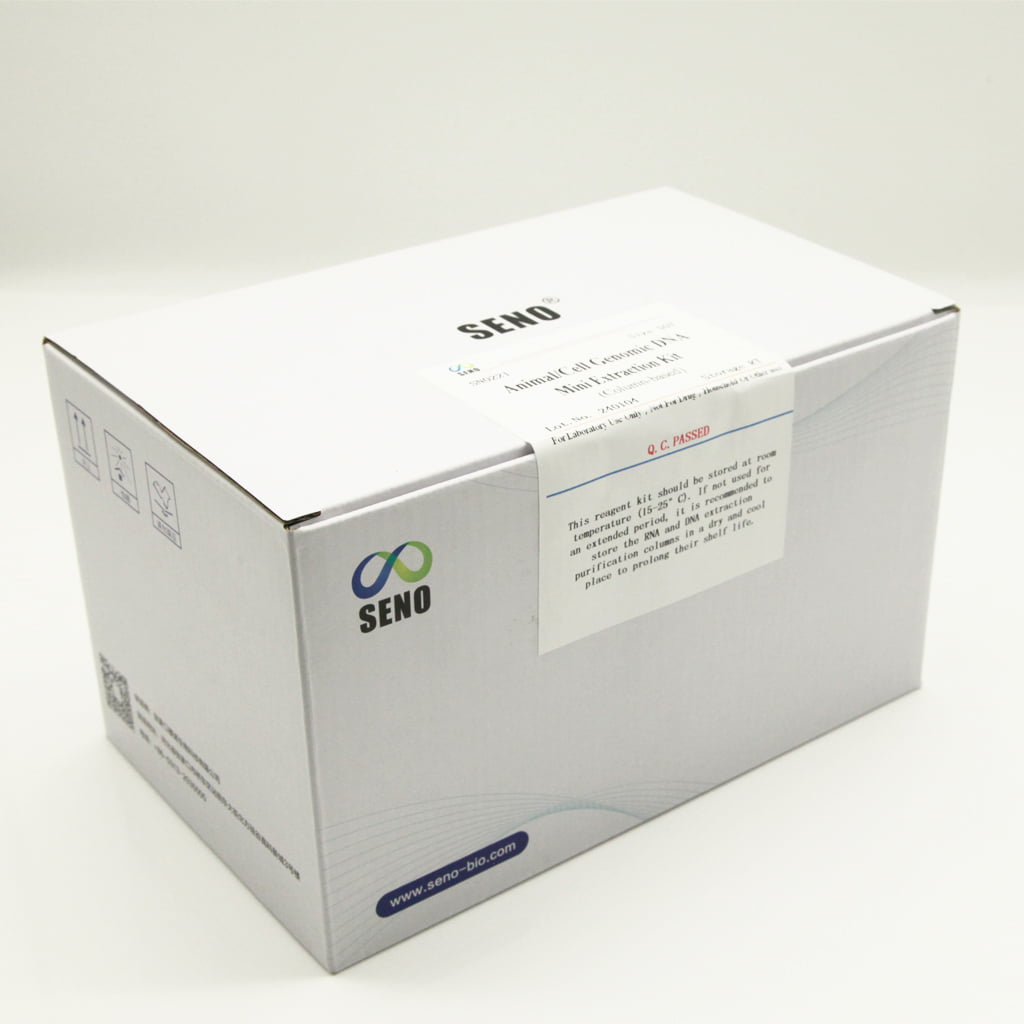
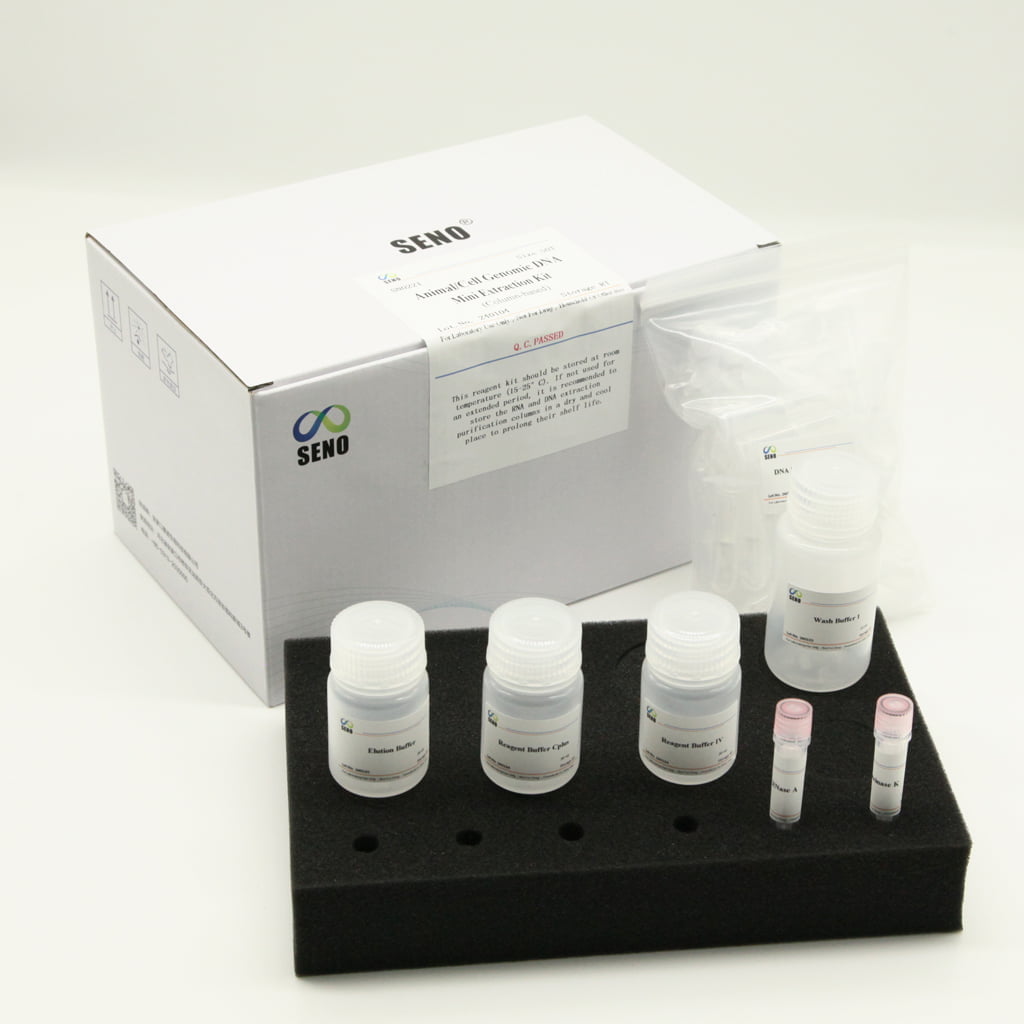
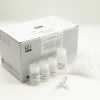
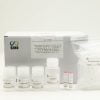
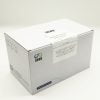
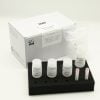
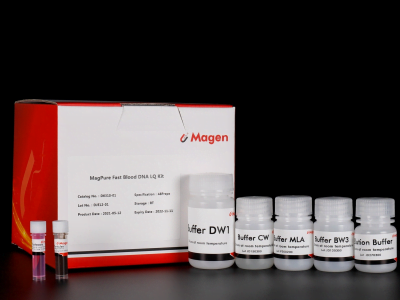



Rezensionen
Es gibt noch keine Rezensionen.